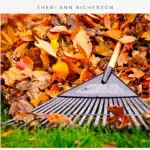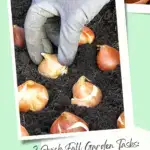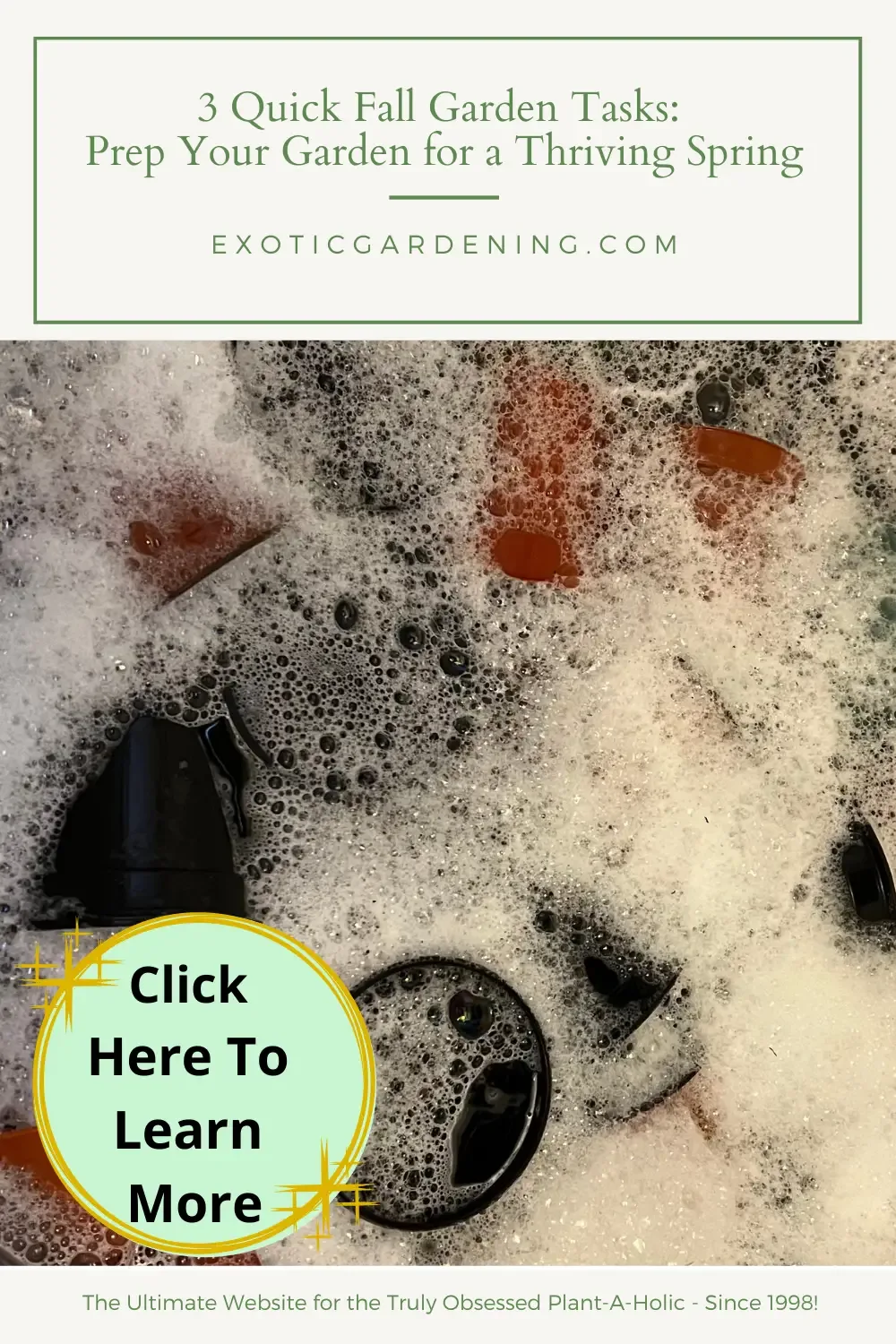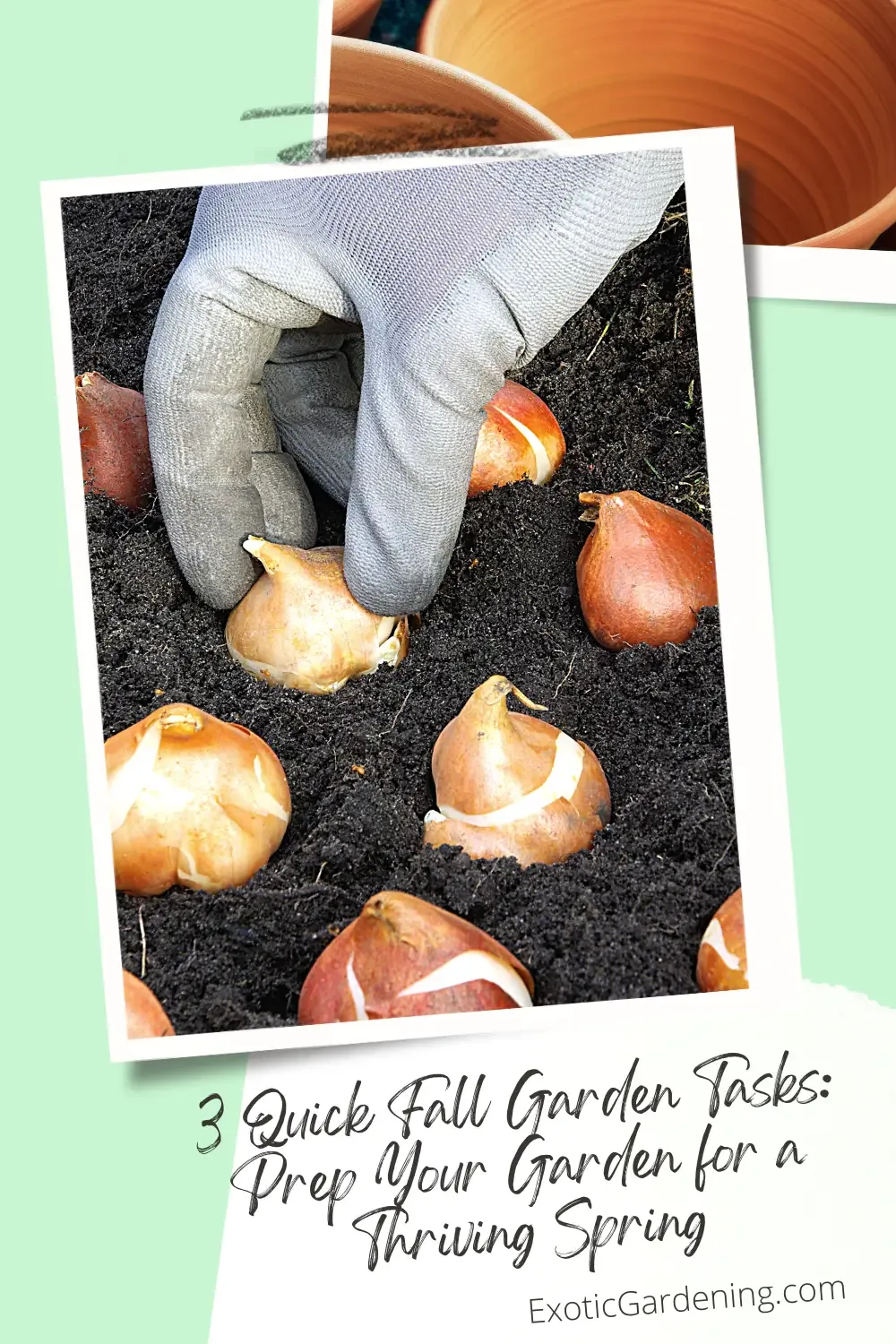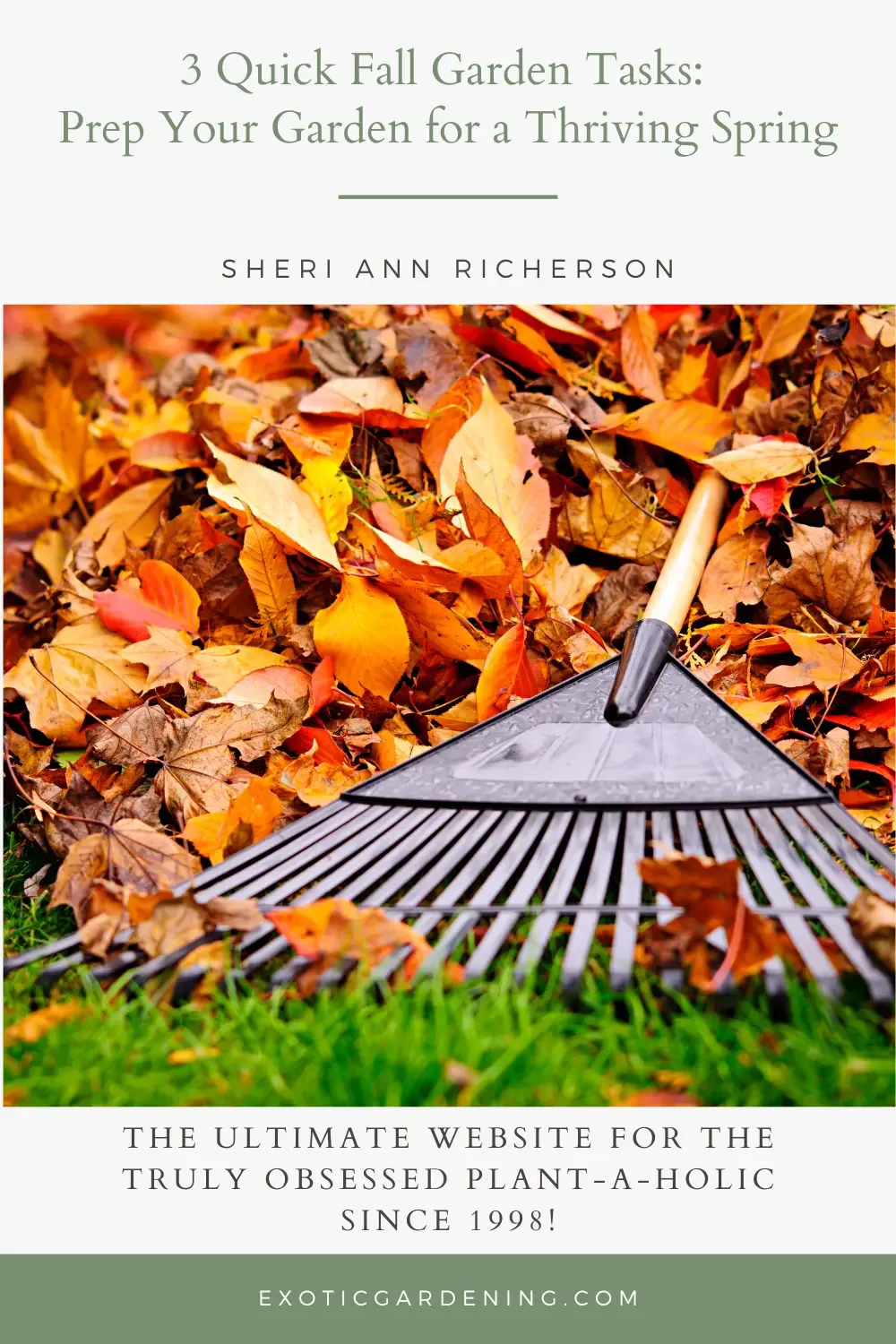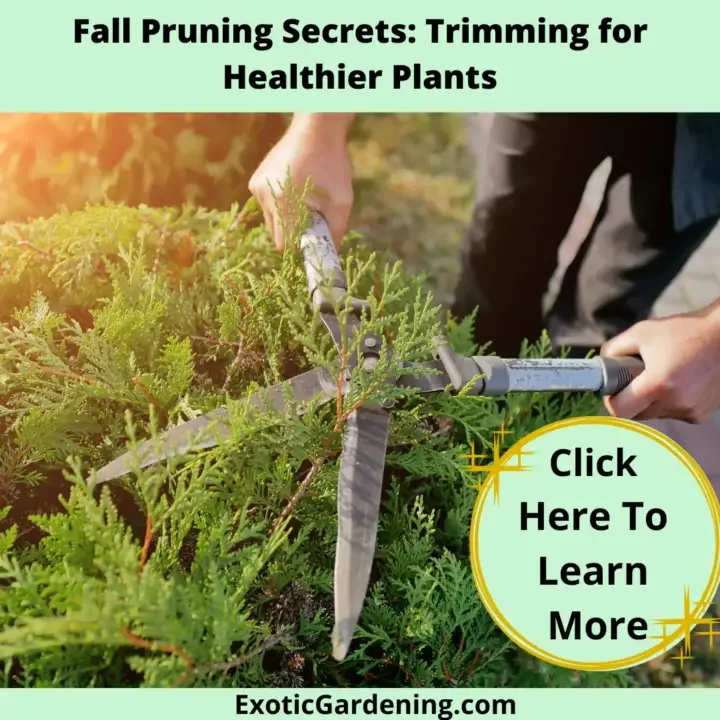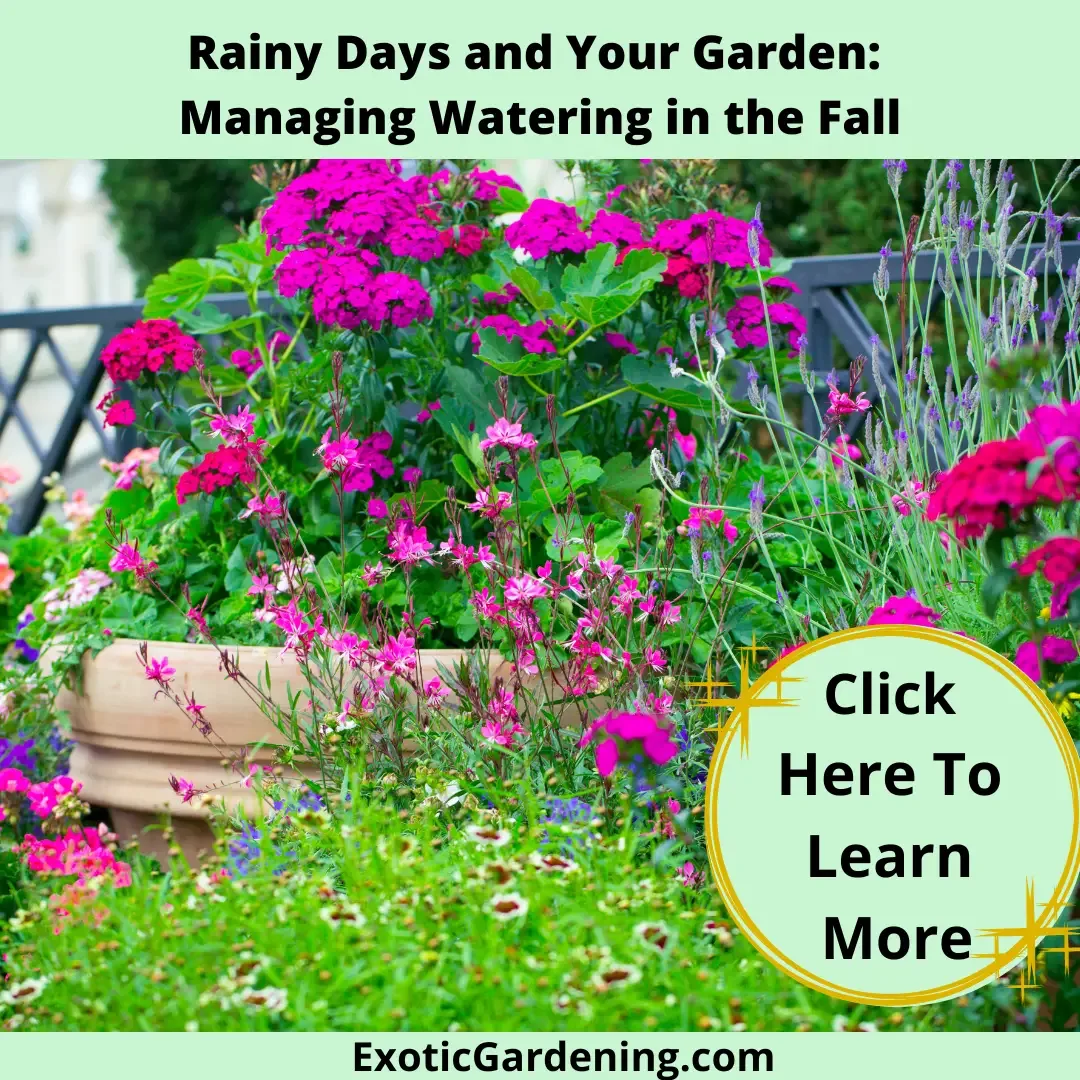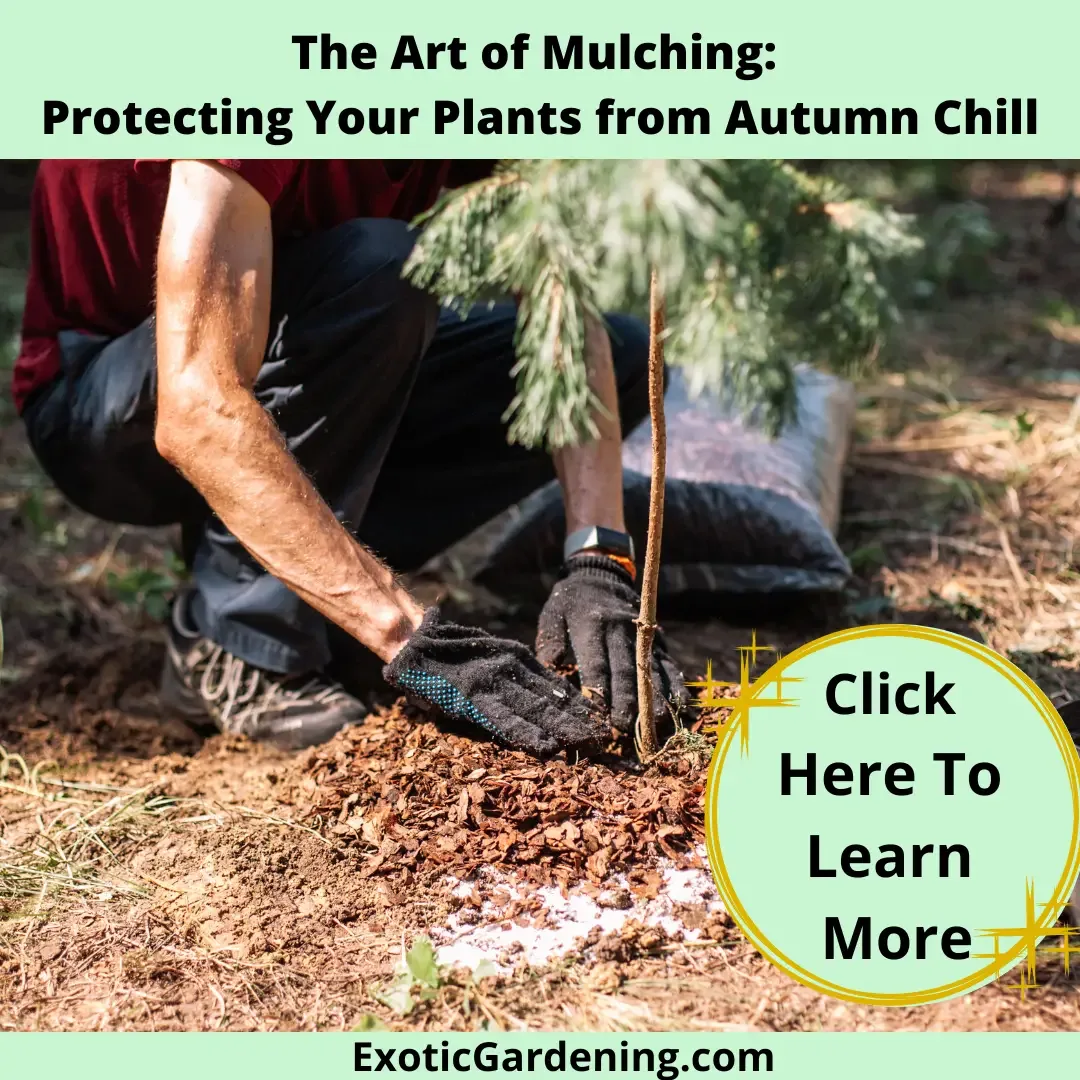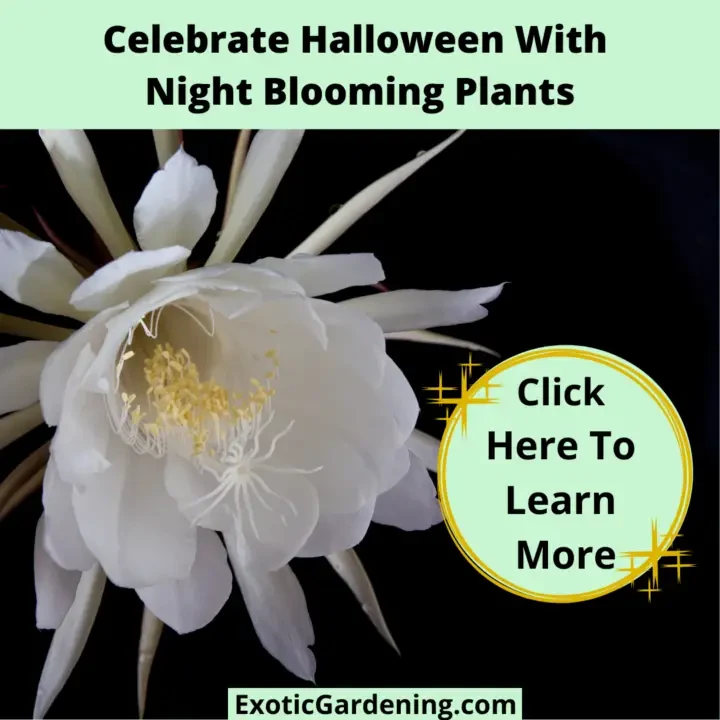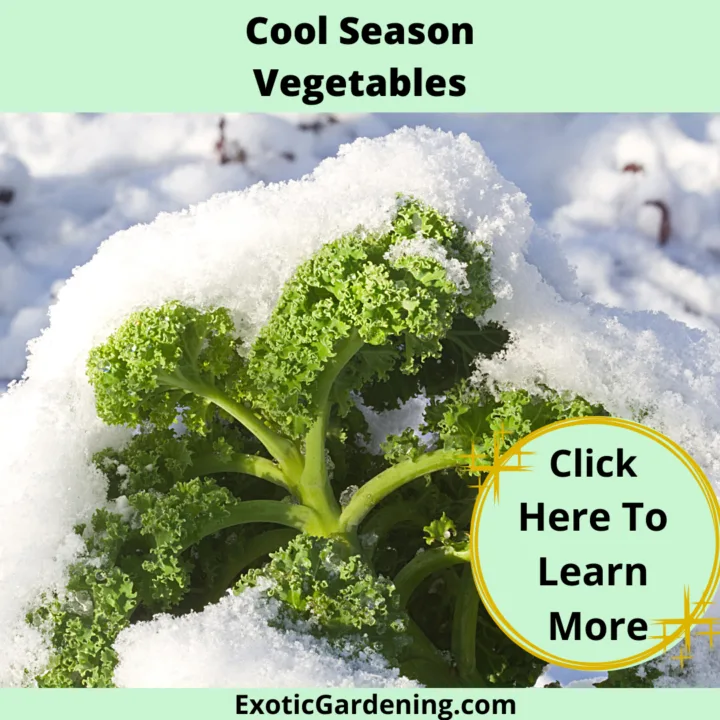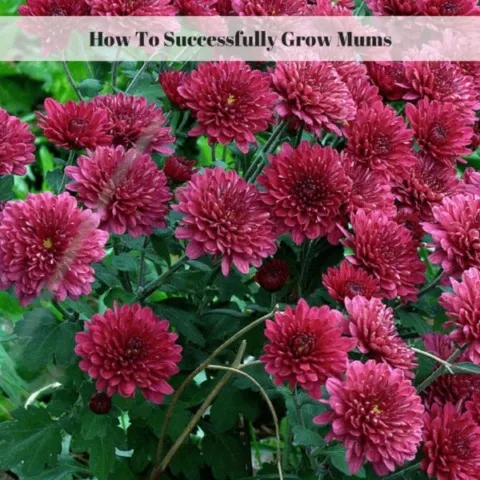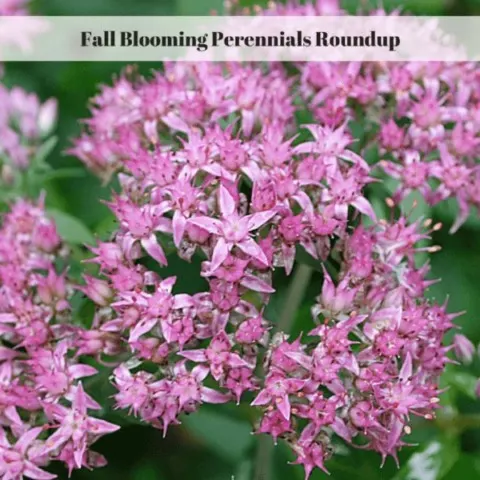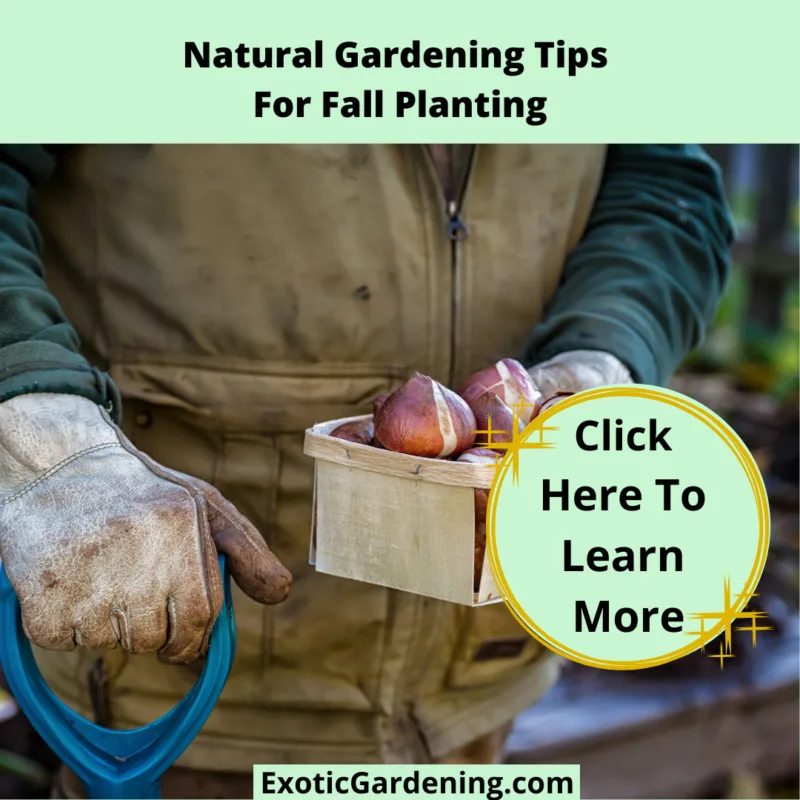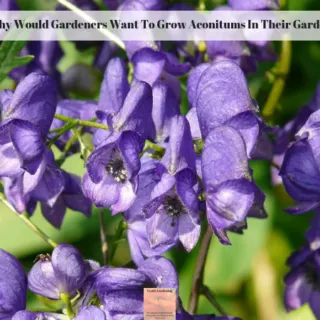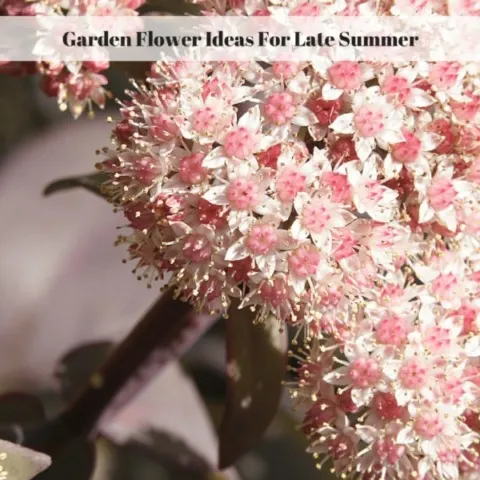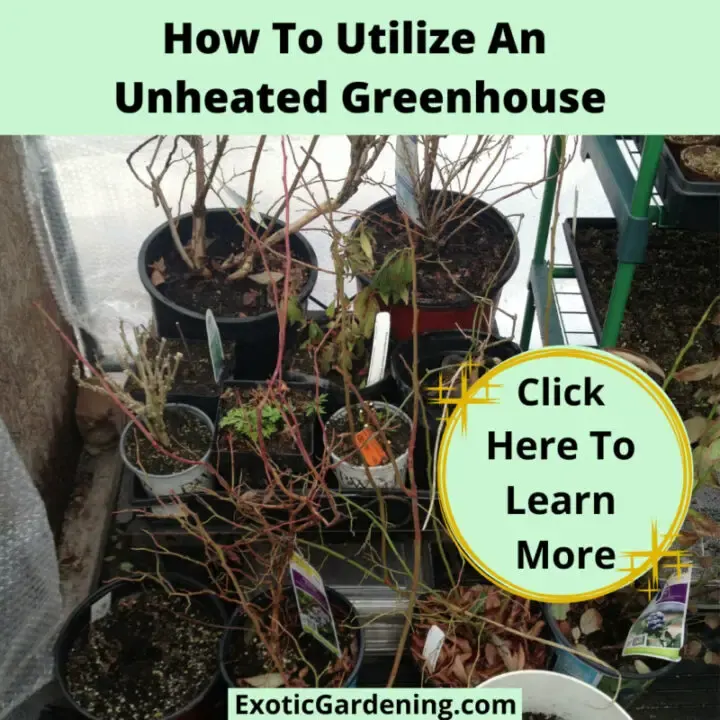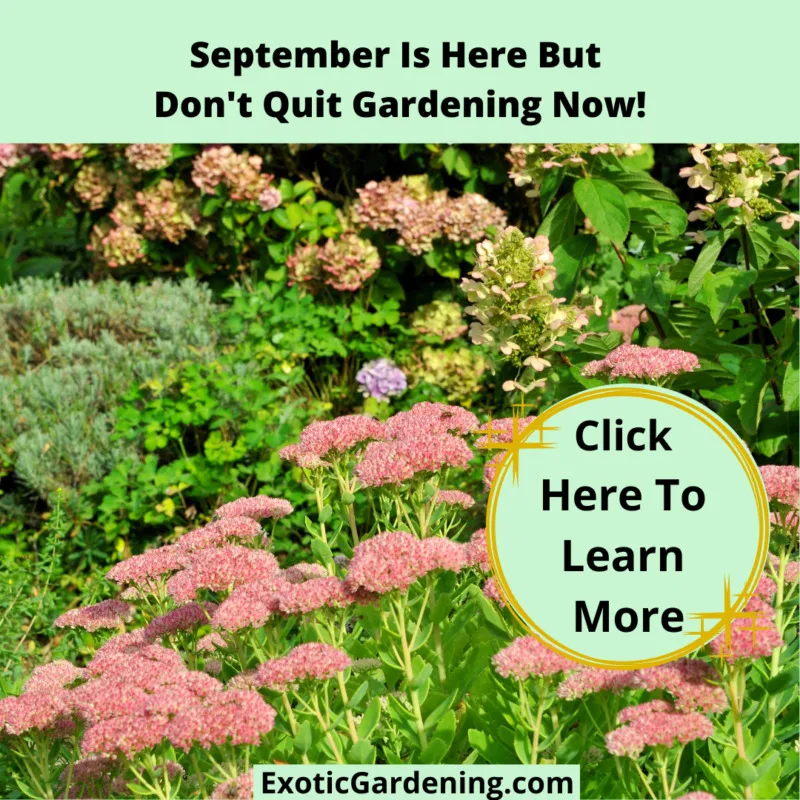As the calendar transitions to fall, life gets busier with back-to-school preparations, the delightful flurry of fall decorating, and anticipation for upcoming holidays.
However, amidst all these seasonal activities, it’s important not to forget the garden.
Fall marks the end of the garden season for many, but it’s also the perfect time for essential fall garden tasks.
In this season of transition, I’m excited to share three quick fall garden tasks that you can tackle while the weather still offers a comfortable working environment.
These tasks are not just about wrapping up the current gardening year; they’re about setting the stage for a vibrant, thriving garden in the coming spring.
The best part is, you don’t need to dedicate hours at a stretch to complete these tasks.
Instead, I encourage you to take them on gradually, a little each day.
This way, you’ll strike a balance between your gardening responsibilities and the enjoyment of other fall activities.
So, let’s dive into these fall garden tasks, ensuring a harmonious blend of gardening and the autumn festivities.
Task #1 – Plant Bulbs
Fall is the perfect time to plant bulbs that are hardy in your area because it is the perfect season to lay the groundwork for a vibrant spring garden.
As the leaves turn and the weather cools, it’s time to get your hands in the soil.
If you’ve been tending your garden for a while, you might find it a bit challenging to remember where all those spring bulbs are hiding.
I know the feeling all too well!
Thankfully, fall is your opportunity to remedy this.
Consider the beautiful perennials gracing your garden – they’re still very much alive, and you can use them as markers to guide your bulb planting.
And if you’re like me, you may have forgotten where a few of them are hiding.
That’s where a bit of creative thinking comes in.
I’ve found that taking pictures of my garden in full bloom during spring and early summer can be a lifesaver.
They serve as a visual guide to where your bulbs are located, even when they’re dormant in the fall.
Now, while painting the soil with garden-friendly paint or using stakes is a great idea, you can also rely on your memory or those pictures.
You see, it’s perfectly okay to keep planting bulbs as long as the ground is workable.
And if you do happen to unearth a previously planted bulb, don’t fret.
Simply tuck it back into the soil and let it rest peacefully through the winter.
Furthermore, fall is an excellent time to address any overcrowded areas in your garden.
Give those perennials and bulbs some space to breathe.
Divide them and spread the beauty around your garden.
Trust me; your spring self will thank your fall self for this thoughtful gesture.
Task #2 – Empty Flower Pots
As the frost creeps in and takes its toll on your container plants, it’s time to roll up your sleeves and do a little cleaning.
After all, we ask know once frost hits your area many flowers grown in containers are killed.
Remove the remnants of those once-lively plants and empty the soil from your containers.
The organic material can be composted, provided it wasn’t plagued by disease.
But why go through this process?
It turns out that even pots labeled “frost-proof” might not be “freeze-proof.”
The water left inside the pots can freeze, causing them to crack or burst over the winter.
So, emptying the pots ensures they survive the cold season intact and ready for action in spring.
Why is this so important?
Well, it’s a bit of a gardening secret, but those seemingly sturdy pots can be surprisingly delicate when it comes to surviving the harsh embrace of winter.
You see, when water trapped inside the pot soil freezes, it expands.
This expansion can exert immense pressure on the walls of your pots, leading to cracks or even complete shattering.
So, even though they could handle frost, they’re not necessarily prepared for the freeze.
Imagine the disappointment of unearthing your precious pots in spring, only to find them fractured beyond repair.
It’s a scenario that no gardener wants to face.
That’s why the seemingly simple act of emptying your pots can save you from heartache down the road.
It’s an investment in the longevity of your garden tools and accessories.
But that’s not the only benefit of this fall task.
Emptying your containers creates a clean slate for your gardening adventures.
By removing the remnants of summer blooms and the old soil, you’re essentially hitting the reset button on your containers.
This sets the stage for our next task, which is to give those empty pots a good cleaning.
So, by emptying your containers, you’re not only preserving their integrity but also ensuring that they’re primed and ready for the upcoming growing season.
It’s a small effort now that reaps significant rewards in the future.
Your garden will thank you for it, and you’ll have the satisfaction of knowing that your cherished pots are safe and sound, ready to cradle new life when spring returns.
Task #3 – Clean, Stack And Store Empty Pots
With your containers cleared of their former occupants, it’s time to give them a little TLC.
A thorough cleaning now will pay off when you’re eager to start your spring planting.
Washing your pots isn’t just a routine task; it’s an act of preparation and respect for your gardening companions.
After all, they’ve held the beauty of your garden, so it’s only fair to return the favor.
Begin by washing the pots with hot, soapy water, inside and out.
This isn’t just about getting rid of visible dirt; it’s about removing any hidden remnants of the past growing season.
Scrubbing the pots with warm, soapy water not only cleans the surface but also ensures that any stubborn dirt or lingering bits of roots are gently but effectively dislodged.
It’s a therapeutic ritual, a moment to reflect on the seasons that have passed and the promise of what’s to come.
But here’s where you can introduce a little magic to the process – a light spray of hydrogen peroxide.
It’s my preferred choice over bleach, and here’s why.
Hydrogen peroxide is a milder, more plant-friendly alternative.
If there are any traces left in the pot after rinsing, don’t worry.
Unlike bleach, which could harm your future greenery, hydrogen peroxide is kind and gentle.
It won’t pose any threat to your precious plants.
Once you’ve cleaned your pots, let them air dry thoroughly.
This helps prevent any trapped moisture, which could lead to mold or mildew.
Now, with your pots sparkling clean and dry, it’s time for a little organizational magic.
Stack them neatly according to size.
It’s a small effort that pays off in spades when you’re ready to start your spring garden.
No more rummaging through a chaotic pile of pots, searching for the right size.
They’ll be lined up like soldiers, ready and waiting for your gardening endeavors.
It’s a simple yet effective way to bring order to your gardening tools and ensure that you can quickly find the right pot for the right plant.
So, while washing and stacking your pots may seem like a routine chore, it’s an act of devotion to your gardening craft.
It’s a nod to the past and a gesture of readiness for the future.
And when you stand in your garden next spring, with clean, organized pots at your disposal, you’ll be grateful for the time and care you invested in these humble yet essential tools.
A Flourishing Spring Awaits: Embrace Fall Garden Tasks
As the vibrant colors of fall paint the landscape, it’s a time of both reflection and anticipation for gardeners.
Your garden has provided beauty and nourishment through the spring and summer, and now it’s time to repay the favor.
With the completion of these essential fall garden tasks, you’re not just closing the chapter on one growing season; you’re turning the pages of a fresh, promising spring.
The act of planting bulbs is like sowing the seeds of anticipation.
It’s a joyful promise of the vibrant blooms that will grace your garden when the frost retreats.
Plus, the added benefit of tidying up your perennials and bulbs now ensures that they’ll have room to breathe and flourish in the coming season.
Emptying your containers may seem like a simple act, but it’s an act of respect for the vessels that have nurtured your plants.
By ensuring they’re free from soil and remnants of seasons past, you’re giving them the best chance to cradle new life when spring returns.
And finally, the cleansing and stacking of these containers are an act of preparation and organization.
It’s an assurance that your gardening tools are ready and waiting for your next creative endeavor.
By investing time in these essential tasks, you’re not just taking care of your garden; you’re nurturing your own connection with nature.
You’re respecting the cycles of growth and dormancy, and you’re setting the stage for a garden that will fill your heart with joy in the coming spring.
So, go ahead and embrace the beauty of the fall season.
Revel in the crisp air, the earthy scents, and the sound of leaves crunching beneath your feet.
These fall garden tasks are your bridge to a more successful and enjoyable gardening experience when spring arrives.
As you close this chapter, I invite you to look forward to a new one.
May your spring garden be a bountiful and joyful reflection of the love and care you’ve invested in it.
Fall Gardening FAQs: Prepping Your Containers and More!
Q. What are some essential fall gardening tasks?
A. Essential fall gardening tasks include planting bulbs, emptying flower pots, cleaning and storing garden tools, raking leaves, and preparing the soil for winter.
Q. When is the best time to plant fall bulbs?
A. The best time to plant fall bulbs is in late summer to early fall, before the ground freezes.
Q. Can I still plant bulbs if I don’t remember where my spring bulbs are planted?
A. Yes, you can. Use existing perennials as markers or refer to pictures you took when your garden was in bloom during the spring.
Q. What do I do if I accidentally dig up bulbs while planting new ones?
A. Simply re-plant the unearthed bulbs in the same area. They should be fine as long as you did not cut the bulb in half.
Q. Why is it important to empty flower pots in the fall?
A. Emptying flower pots in the fall prevents them from cracking or bursting over the winter due to freezing water.
Q. Can I compost the soil from my empty flower pots?
A. Yes, you can compost the soil as long as it wasn’t affected by disease.
Q. Why should I clean and stack empty pots in the fall?
A. Cleaning and stacking empty pots in the fall makes them easier to store and locate for spring planting.
Q. What’s the best way to clean empty pots?
A. Wash them with hot, soapy water inside and out, rinse with hot water, and consider giving them a light spray of hydrogen peroxide as a plant-friendly alternative to bleach.
Q. How can I prepare my garden for winter?
A. To prepare your garden for winter, clean up dead plant material, mulch, protect sensitive plants, and make sure your tools are properly stored.
Q. What’s the purpose of adding mulch in the fall?
A. Mulch in the fall helps insulate plant roots, maintain soil moisture, and protect against temperature fluctuations.
Q. When should I trim back perennials in the fall?
A. Trim back perennials after they have died back naturally, typically late in the fall.
Q. Is it necessary to clean and sharpen gardening tools in the fall?
A. Yes, it’s essential. Cleaning and sharpening tools in the fall prolongs their lifespan and ensures they’re ready for spring.
Q. Can I leave some plants in the ground over the winter?
A. Perennial plants, roses, trees and shrubs can stay in the ground over the winter.
Q. What’s the significance of raking leaves in the fall?
A. Raking leaves in the fall prevents them from smothering your lawn and garden, allowing air and light to reach the soil. The leaves make great compost and personally I do not remove the leaves from my perennial beds or vegetable garden choosing instead to let them break down on their own over winter which enriches the soil. The exception to the rule is if there is a huge pile of leaves. I do remove those and I also make sure no leaves are piled up against trees, roses or shrubs as this could allow insect damage or even disease to affect my woody plants.
Q. How can I improve my soil in the fall for better spring planting?
A. You can improve your soil in the fall by adding organic matter like compost or well-rotted manure and tilling it in. A three inch layer of compost is recommended.
Q. What’s the role of fall garden tasks in preparing for a successful spring garden?
A. Fall garden tasks set the stage for a successful spring garden by ensuring your garden is clean, organized, and ready for new growth.
Q. Are there any special considerations for fall garden tasks in colder climates?
A. In colder climates, it’s crucial to protect plants from frost and ensure proper soil insulation for the winter.
Q. Can I store my gardening tools outdoors during the winter?
A. It’s best to store gardening tools indoors during the winter to prevent damage from freezing temperatures and moisture.
Q. How can I make fall gardening tasks a fun family activity?
A. Involve your family in fall gardening tasks by making it a collective effort, teaching kids about plants, and rewarding everyone with a hot cocoa break. Allow your kids to rake leaves, then jump in the leaf pile. While this will mean a little extra work at the end of the day, the fun and memories are well worth it.
Q. What are some creative ways to recycle or upcycle garden waste from fall tasks?
A. You can turn garden waste into compost, use it as mulch, or get creative with DIY craft projects to decorate your home or garden. Dried Hydrangea blooms, rose hips (edible), and many other flowers that dry well are ideal for crafting.
The Fall Garden
Fall Pruning Secrets: Trimming for Healthier Plants
Discover Fall Pruning Secrets: Learn when and how to prune for healthier plants in our expert guide. Your garden will thank you!
Rainy Days and Your Garden: Managing Watering in the Fall
Discover the art of managing watering in the fall. Tips to prevent overwatering and keep your garden thriving on rainy days.
The Art of Mulching: Protecting Your Plants from Autumn Chill
Discover the secrets of expert mulching in fall. Learn how to protect your plants from the autumn chill with our essential mulching guide.
Crafting Miniature Gardens for Halloween - A Vintage Halloween Tale
Craft Vintage-Inspired Miniature Gardens for Halloween - Spooky Terrariums with Plants and Halloween Decor.
Halloween Horticulture: Plants with Magical Properties for Halloween
Unlock the enchanting world of Halloween with plants with magical properties. Discover their mystical allure in our captivating guide.
Growing Exotic Pumpkin Varieties for a Magical Fall Garden
Discover the allure of exotic pumpkin varieties in your garden for a magical fall. Spice up your harvest with diversity!
Creating a Spooky Halloween Garden: Unveiling Nature's Eerie Allies
Transform your garden into a spooky Halloween haven with eerie insects, enchanting decor, and the magic of nature. Explore now!
Monkshood Flowers for the Fall: A Majestic and Toxic Beauty
There are some late blooming flowers for the fall season such as monkshood. Autumn monkshood is known to bloom from September to November!
Sweet Autumn Clematis: A Garden Treasure
Discover the enchantment of Sweet Autumn Clematis: rapid growth, fragrant blooms, and versatile garden beauty await!

